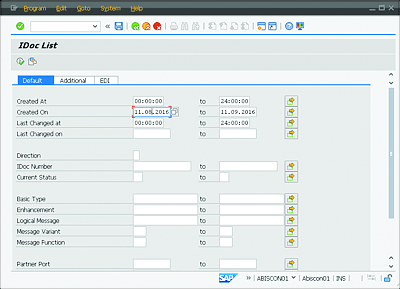12 Electronic Data Interchange
To accelerate data exchange with other SAP systems and make sure the data are transferred correctly, many companies use Electronic Data Interchange (EDI). This chapter introduces EDI.
This chapter discusses the following:
- How EDI is used in practice
- How data are exchanged between SAP systems
12.1 Overview of the Electronic Data Interchange Process
EDI refers to the communication between different IT systems. When using EDI, data are sent in such a way to be further processed immediately by the recipient’s IT systems.
[»] Data Exchange between Different Systems
EDI is not only used to exchange data between SAP systems. Because EDI uses system-independent standards (e.g., United Nations Electronic Data Interchange for Administration, Commerce and Transport [EDIFACT]), it can also be used for communication with other vendor’s enterprise resource planning systems (Oracle, Navision, Baan, etc.).
To be able to exchange data between IT systems, the data must be available in a certain structure. These information packages are combined in the SAP system in Intermediate Documents (IDocs). In the SAP system, IDocs are used to transfer information within a company or between different companies. For example, a separate IDoc is generated for every document (purchase order, invoice, confirmation, etc.). This IDoc is then transferred to the target system. At this point, you can only check if the IDoc was transferred. You can’t access the target systems to which the data were transferred.
Table 12.1 lists important transactions that can be used in the SAP system to check if IDocs were transferred.
Table 12.1 Important IDoc Transactions
An IDoc comprises several components (as seen in Figure 12.1): a control record (identical for all IDocs), different data records that include an administration and a data part, and status records containing information on the current processing status.
Figure 12.1 IDoc Display (Transaction WE05)
